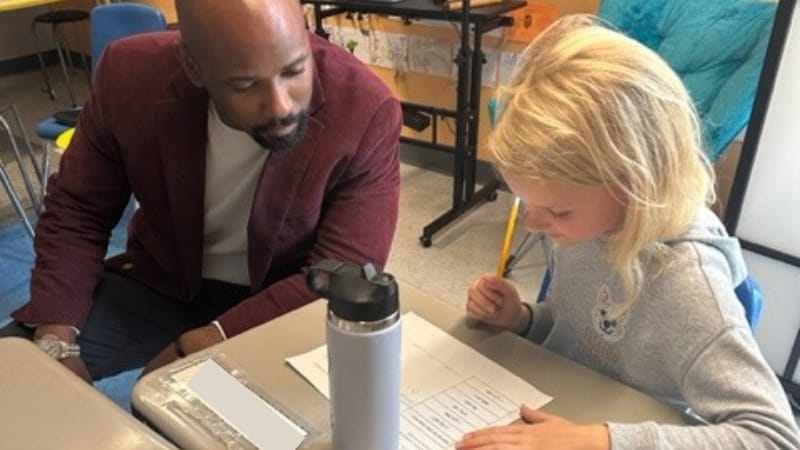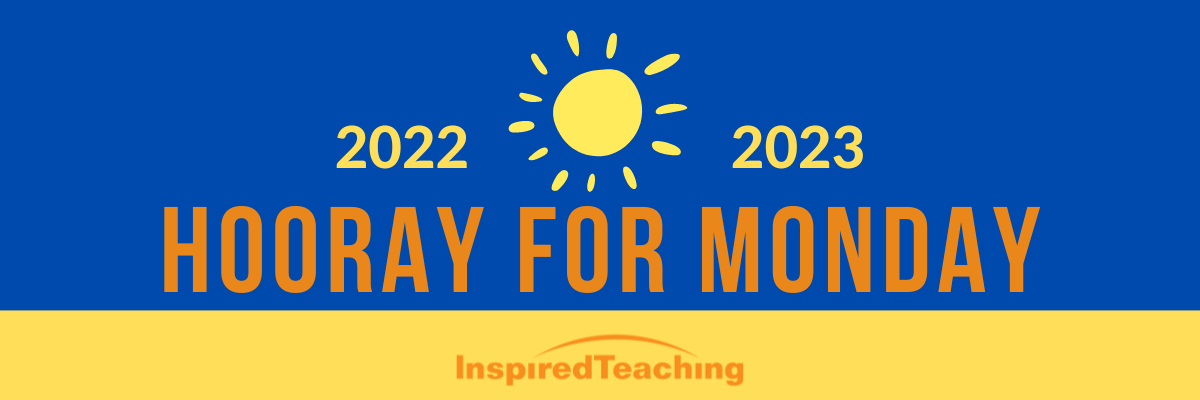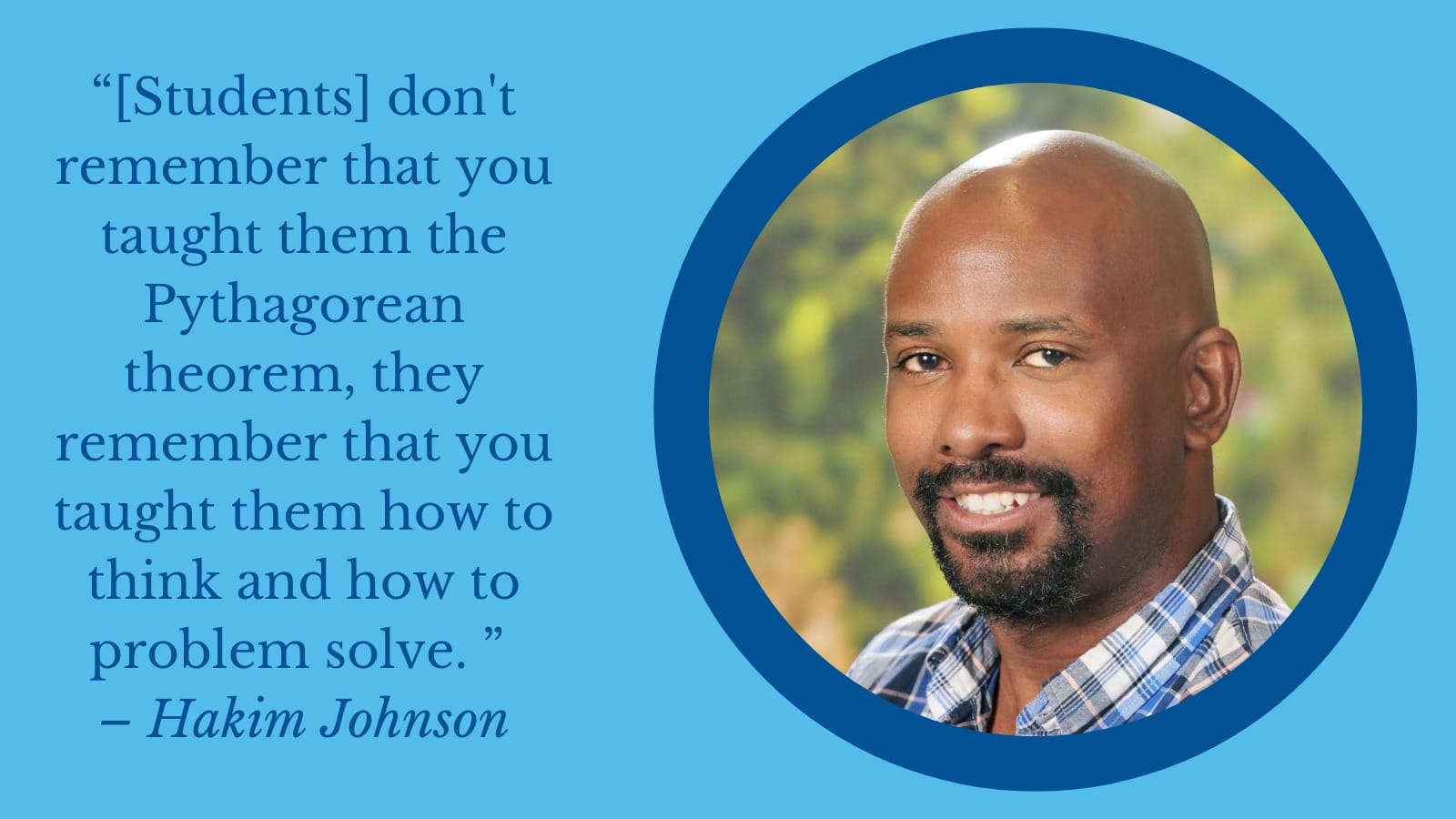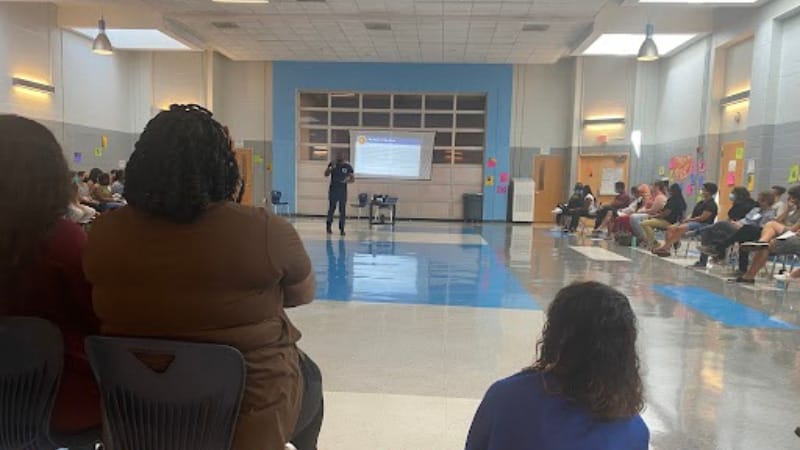October 31, 2022
By Jenna Fournel, Director of Teaching and Learning
Hooray for Monday is a weekly blog filled with questions, ideas, reflections, and actions we can all take to remodel the school experience for students.
You can now listen to Hooray for Monday on Spotify! Check out our podcast here.
In our everyday lives, feedback tends to get a bad rap because we associate it with negative job performance or critical product reviews. But feedback is essential to our growth as humans. This week’s interview with Hakim Johnson explores the ways in which feedback can make our jobs easier and our work in the classroom more effective.
Hakim is the principal at the Inspired Teaching Demonstration School. He has worked as an educator in Washington, DC for 13 years, both as a classroom teacher and in administrative roles. Throughout his career, student feedback has kept him doing the work. “When you see a student who leaves you and then they come back a few years later and you run into them and they remember your name immediately and they say, ‘Listen, I know you gave me a hard time, but I’m telling you it helped, I am doing this because of those things that you taught me.’ They don’t remember that you taught them the Pythagorean theorem; they remember that you taught them how to think and how to problem solve. That right there gives me joy.”
Hakim hears this kind of feedback regularly, because his focus in the classroom has always been on giving students ownership over their own growth. He uses feedback to teach students how to correct things for themselves. “When we give feedback to kids, it has to be something that is tangible for them to improve. That’s where letter grades by themselves don’t actually provide that much feedback. A 90% means nothing [without feedback]. When I provided feedback to students it wasn’t just saying, ‘You got this right or wrong,’ but it was really pushing them by saying, ‘These are things that you really did well, but these are also areas where you could have done a little better.’”

Hakim finds that a lot of his conversations with teachers focus on how they are providing feedback to their students. Often he has to help them navigate the time constraints that can make it challenging to provide meaningful, individualized feedback to every student. “The biggest thing I always tell people is if you do it right with students the first time, and give effective feedback, and get them to do that self-reflecting and that heavy lifting on their own, that actually makes your job a lot easier on the backend.”
Hakim reminds us that students “are not going to have someone by their side all the time telling them when they’ve got something right or when they are doing something wrong. In order for a student to have that ability to be autonomous and make those decisions, they have to have that piece where they can reflect on [their own learning]. Otherwise they aren’t going to necessarily make decisions that are in their best interests for their growth.” Teaching students how to think, how to assess their own growth, and how to problem solve puts them in the driver’s seat of their own learning. And thoughtful feedback is core to this kind of student-centered teaching.

As you head into this week, consider ways you might use feedback to fuel your own learning as a teacher:
-
How can you gather feedback on your own teaching?
-
How can you give students more concrete feedback about their learning?
-
What might happen if you just record your voice for a lesson and listen back to the language you and your students are using?
-
It’s the end of the quarter in many schools right now. What if you had students write up a reflection on their learning thus far to share with families in addition to their grades?
May you find unexpected learning in the feedback you provide and invite.
3 Approaches to Feedback for Growth

5 Closing Activities where Students Give YOU Feedback
You and your students are poised for growth this year, and feedback is the key to making that happen. These simple closing activities invite students to let you know what and how they learned during your class and that feedback can help you adapt your instruction for the next class.
Finding the Zone of Proximal Development
Challenging students to spend time in their zones of proximal development means helping them identify their capabilities and competencies, and then stepping just far enough outside of their comfort zones to stretch toward what might be possible. This is a simple exercise to do with your students in the first days of school to help them understand this concept.
When your students (or you!) are struggling with a task, consider talking to them about the power of “yet.” Have them reflect on things they didn’t know how to do in the past but eventually learned to accomplish. When we’re overwhelmed by a challenge, “yet” can be a good reminder that we can do hard things.



